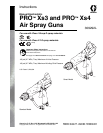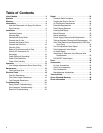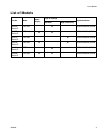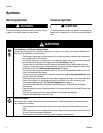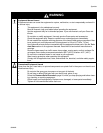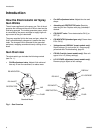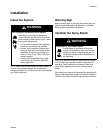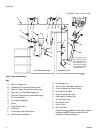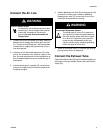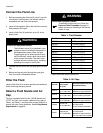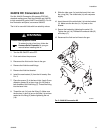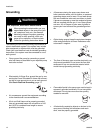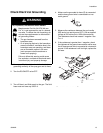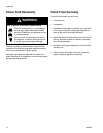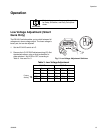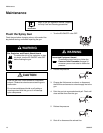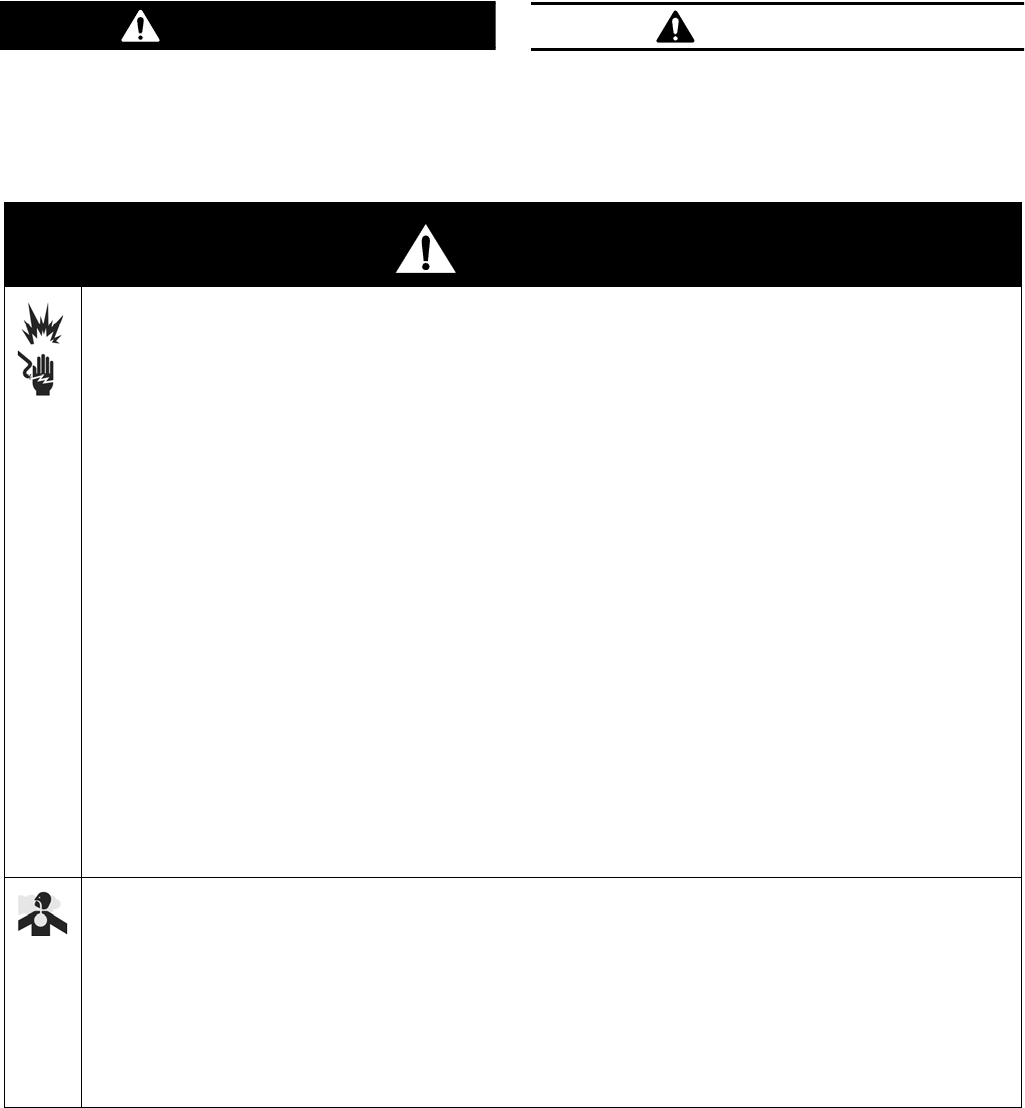
Symbols
4 309292L
Symbols
Warning Symbol
This symbol alerts you to the possibility of serious injury
or death if you do not follow the instructions.
Caution Symbol
This symbol alerts you to the possibility of damage to or
destruction of equipment if you do not follow the instruc-
tions.
WARNING
CAUTION
WARNING
Fire, Explosion, and Electric Shock Hazard
Improper grounding, poor air ventilation, open flames, or sparks can cause a hazardous condition and
result in a fire, explosion, or electric shock.
• Electrostatic equipment must be used only by trained, qualified personnel who understand
the requirements in this manual.
• Ground the equipment, all personnel in or close to the spray area, the object being sprayed,
and all conductive objects in the spray area. See Grounding, page 12.
• Provide fresh air ventilation to avoid buildup of flammable or toxic vapors when spraying,
flushing, or cleaning the gun. Interlock the gun air supply to prevent operation unless venti-
lating fans are on. See Ventilate the Spray Booth on page 7.
• Do not flush with the gun electrostatics on. Do not turn on the gun electrostatics until all sol-
vent is removed from the system.
• If there is any static sparking while using the equipment, stop spraying immediately. Iden-
tify and correct the problem.
• Eliminate all ignition sources such as pilot lights, cigarettes, and static arcs from plastic drop
cloths. Do not plug in or unplug power cords or turn lights on or off in the spray area.
• Check gun resistance daily. See Test Gun Resistance on page 18.
• Use cleaning solvents with the highest possible flash point, preferably above ambient
temperature.
• Keep the spray area free of debris and rags. Do not store solvent and flammable fluids in the
spray area.
• Use only non-sparking tools to clean residue from the booth and hangers.
• Keep a fire extinguisher in the work area.
Toxic Fluid Hazard
Hazardous fluids or toxic fumes can cause a serious injury or death if splashed in the eyes or on the
skin, swallowed, or inhaled.
• Know the specific hazards of the fluid you are using. Read the fluid manufacturer’s warn-
ings.
• Store hazardous fluid in an approved container. Dispose of the hazardous fluid according to
all local, state, and national guidelines.
• Wear appropriate protective clothing, gloves, eyewear, and respirator.



